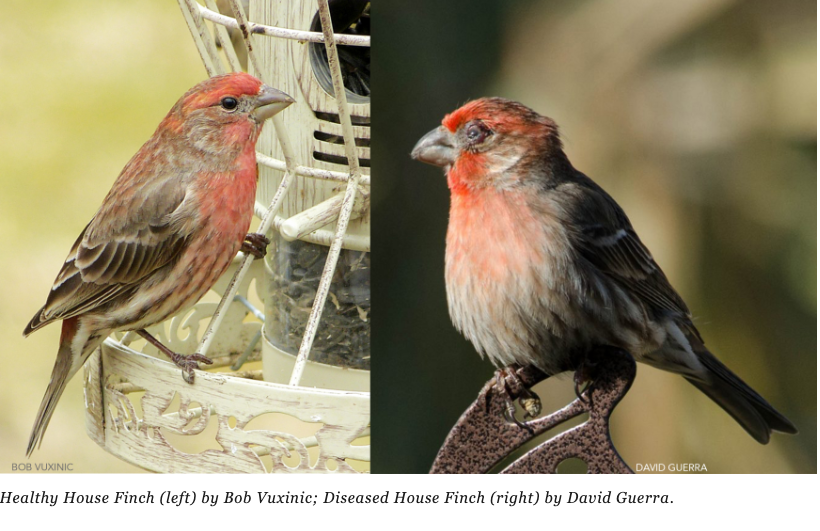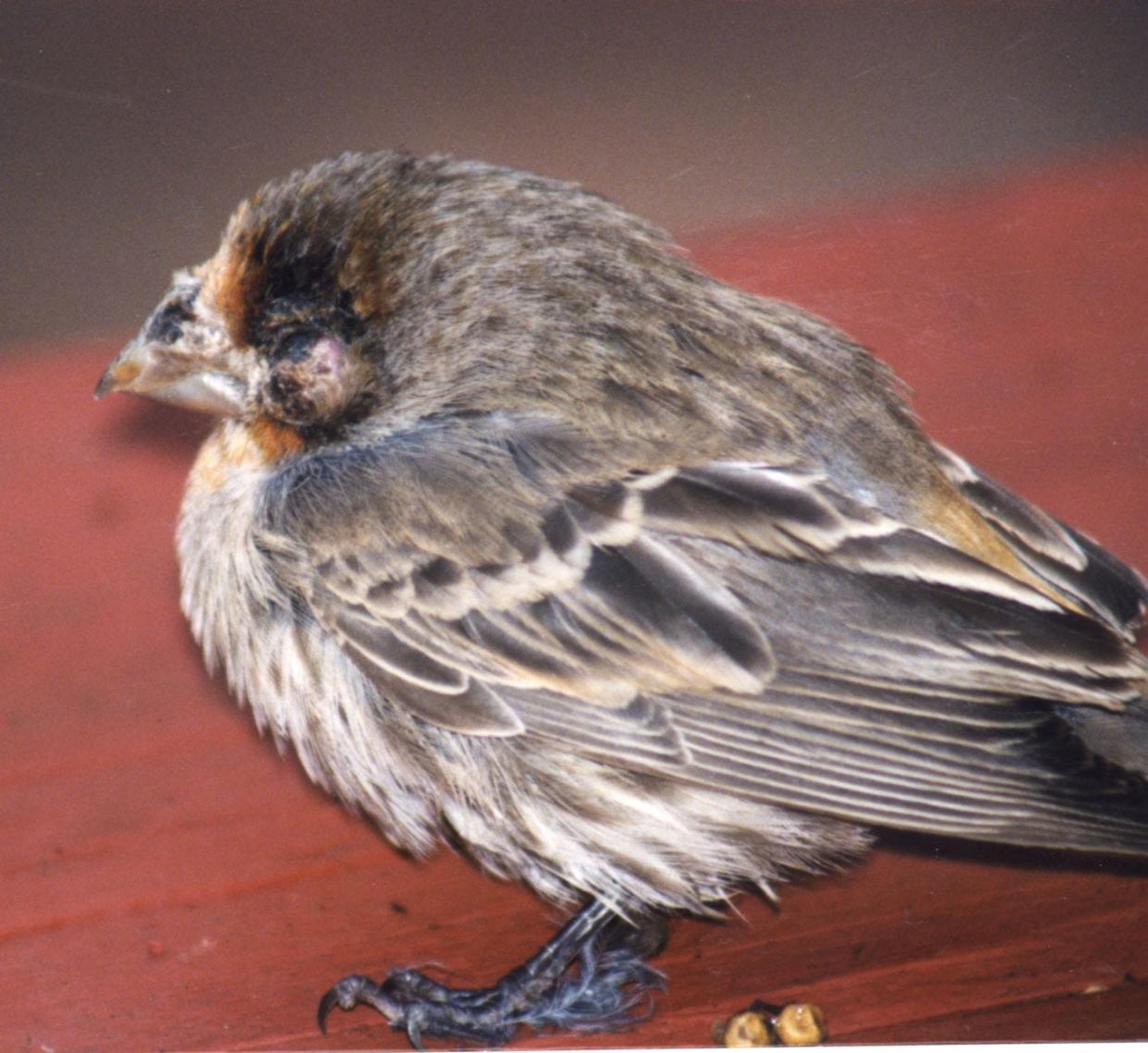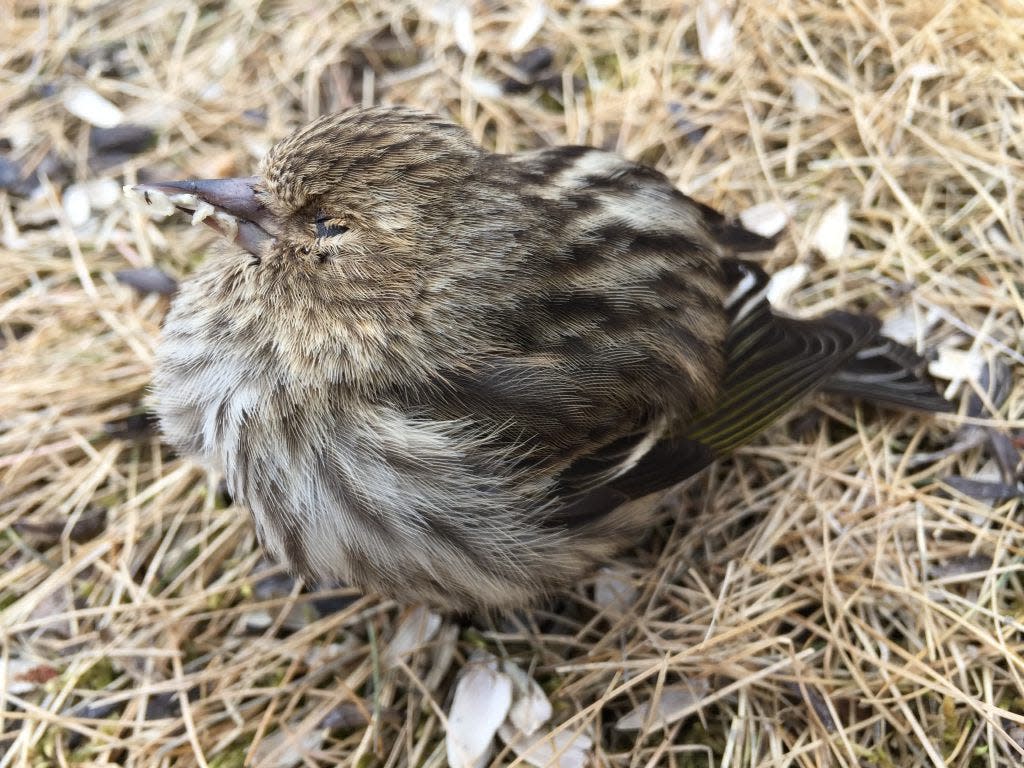Is your feeder making birds sick? Here's how experts say you can help stop avian diseases
The sight of a sick or dead bird at a feeder doesn’t evoke the same delight as a visit from a healthy, chirping songbird. Seeing diseased birds is often a source of concern, confusion and even guilt for people with feeders in their yards.
“When a bird is close to death, it just sits immobile and puffed up,” said Wesley Hochachka, a senior research associate at the Cornell Lab of Ornithology. “They look almost like a ball. You can literally walk up to one and pick it right off the branch.”
Bird feeders are environments where wild songbirds are most likely to aggregate, Hochachka said. As a result, feeders are common places where birds contract diseases.
Does bird feeding do more good than harm? That’s a question even experts have difficulty answering.
Backyard bird count
Choose a state to see the birds spotted most often there from November to April during Project FeederWatch's backyard bird count.
If you do not see a search box here, you can look up the top birds in your state by viewing this page at usatoday.com.
“There certainly are aviary studies that show feeders can increase disease transmission amongst birds,” said Emma Greig, leader of Project FeederWatch. “But how does that translate to birds in the wild who aren’t coming to feeders at all? Or who are coming into feeders but are in flocks and in contact with many different birds all the time?”
Variables such as the species of bird, time of year, geographic location and the bird’s stress level further complicate weighing the costs and benefits of bird feeders, Hochachka said.
“I would never want to be prescriptive and say, ‘You must do this or must not do that,’” Hochachka said. “It’s up to what an individual person is comfortable with.”
Here are the three most common diseases afflicting backyard birds, tips for preventing the spread of disease, and how you can help researchers track diseases.
1. House finch eye disease

If you spot a house finch or related species with red, swollen and crusty eyes, the bird is likely infected with house finch eye disease.
After the bacteria jumped from poultry to house finches in the early-to-mid 1990s, the population of house finches in eastern North America was rapidly cut in half.
Now in a relative state of equilibrium, the overall house finch population isn’t rebounding but isn't at risk of extinction either, Hochachka said.
“It’s kind of a game of whack-a-mole between the bacteria and the house finches,” Hochachka said. The birds develop immunity to the current strain of bacteria causing the infection until a new strain shows up, causing small flare-ups of disease.
While the bacteria don’t directly kill the birds, many die from starvation, exposure and predation once they are vulnerable and blind.
2. Avian pox

At first glance, it can be tricky to differentiate avian pox from house finch eye disease. Sometimes even experts “do a double take” to tell apart similar symptoms like inflamed eyes, Hochachka said.
“One major difference is if you’re in eastern North America, eye disease caused by avian pox seems to be rare,” Hochachka said. “If you’re on the West Coast, it’s much more common.”
Avian pox manifests itself differently in various birds. It frequently causes hard, wart-like, scaly growths to form on featherless areas of a bird’s body, such as the legs and feet.
3. Salmonellosis

With certain bird diseases, you could “bathe in a vat of liquid containing the bacteria” and suffer no adverse effects, Hochachka said. On the other hand, handling a bird infected with salmonellosis can potentially make you sick.
The disease is primarily spread by fecal contamination of food and water tainted by sick birds, making it important to clean feeders with bleach. Sick birds often look lethargic with ruffled feathers, though sometimes no outward symptoms are visible.
Pine siskins and common redpolls are classically susceptible to salmonella due to genetic factors and irregular migration patterns that cause them to suddenly move south in large numbers during winters when food supplies are low.
How you can help prevent spread of bird diseases
Although feeders are often sites of disease transmission, the good news is that there are preventative measures you can take to feed birds responsibly.
"Don’t let feeders get incredibly grotty-looking,” Hochachka said. It’s advisable to clean feeders regularly even when there are no visible signs of disease.
Common tips include ensuring there isn’t an accumulation of feces in an area where you’re feeding. If feeding birds on the ground, move the food around from place to place and spread it out, Hochachka said.
Use fresh seed to avoid mold or fungus growth, Hochachka said. If you see sick or dead birds near your feeder, take down the feeder for a few days to encourage sick birds to disperse.
There’s no perfect cure-all, however.
“Of course, if you have other feeders in the neighborhood, you’re just going to force the birds to congregate even further there,” Hochachka said.
Above all else, Greig recommends simply being observant. “You won’t take feeders down if you don’t notice a sick bird in the first place,” Greig said.
Participating in citizen-science projects, such as Project FeederWatch, is one way to help researchers systematically track bird diseases and better understand the entire scope of an outbreak.
“These programs where lots and lots of people are contributing observations all across the country allow us to see patterns emerge that you would never be able to see if it was just one person or one scientist,” Greig said.
You don’t even need to have a feeder to participate. “Just watch what you have in your yard and tell us about it,” Greig said.
Join now for the 2023–24 FeederWatch season, which begins Nov. 1 and runs through April 30.
This article originally appeared on USA TODAY: What are the signs of a sick or dying bird? How to spot bird diseases
